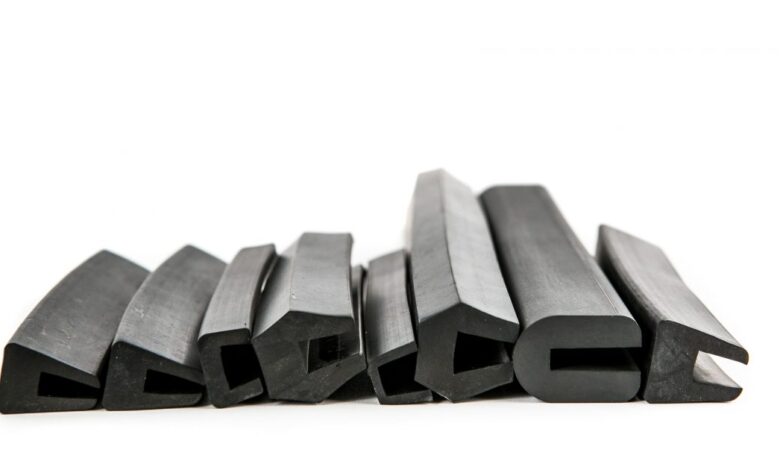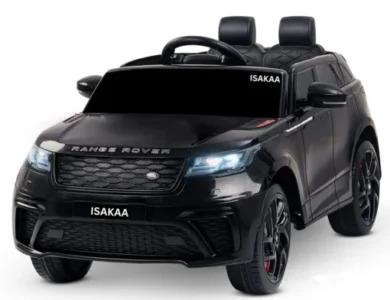How Different Kinds Of Rubber Profiles Are Used For Different Things

The rubber extrusions are a popular method that are used to manufacture different rubber products of different shapes., and sizes. This is a process that involves pushing the rubber material through a die to create a specific shape or a profile. To get the desired end product – there are quite a few design considerations that are being taken into account these days.
When it comes to rubber extrusions profiles, there are different design considerations as mentioned above. Here are the major ones:
Shape and Size
The primary consideration when designing a rubber extrusion profile is the shape, and size of the final product. The shape of those also determines the shape of the profile, and the size of the die determines the size of the profile. One needs to have a clear idea of the desired shape, and size of the final product before they begin the extrusion process.
Material Selection
What choice of rubber materials will be used to make the extrusion completely depends on what purpose they are being used for. The main properties of the rubber material like the flexibility, strength, and resistance of it are needed to be considered when the manufacturer is looking for the rubber material. They also need to see how the material has a resistance power to chemicals, and temperature.
Wall Thickness
When it comes to rubber diaphragms, the wall thickness of the extruded profile does play an important role in their performance. A thicker wall will always provide with a better durability, and resistance to the product while a thinner wall gives more flexibility, and easier installation.
Tolerance and Dimensional Accuracy
Both of these are said to be crucial considerations when it comes to designing rubber extrusion profiles. The accuracy of the die, and the extrusion process also determine the final dimensions of the profile. If the tolerance is tighter, the then the final product is more precise.
Surface Finish
The surface finish of the extruded profile can affect their functionality, appearance, and durability. The surface finish can also be smooth, patterned, or textured – depending on the intended use of the product.
Insertion Requirements
There are some applications where the extruded profile can also require the insertion of metal, plastic or other materials so that it can enhance the functionality of the final product. The design of the die, and the extrusion process must be taken into account in the insertion requirements to ensure that the final product always meets the desired specifications.
Customization Options
There are customization options as well. One can choose options for branding, color, and labelling when they are designing a rubber extrusion profile. These options can also enhance the appearance of the product, and helps one to differentiate it from the other competing products in the market.
These are the major considerations that are done by the rubber extrusion manufacturers and these considerations are very much important because if one wants to make high-quality rubber extrusions – these things are a must. They also need to make them as per the customer considerations.
As mentioned above, there are uses of different kinds of rubbers that are needed to make those rubber extrusions. Each of the types come with their unique properties, and applications.
Types of Rubbers used in the Extrusion Process
Natural Rubber
This is said to be the most common type of rubber that is being used in the extrusion process. This is obtained from the sap of the rubber trees, and they are great when it comes to elasticity. They also have great tensile strength, along with tear resistance. This type of rubber is very idea for use in application where durability, and flexibility is essential like gaskets, seals, and hoses.
Styrene-Butadiene Rubber
This is a synthetic rubber which is made by polymerizing styrene, and butadiene. They are popular because of their great abrasion resistance, low temperature flexibility, and resistance to aging. This type is commonly used in applications where good resistance to wear, and tear is required like in tubing, conveyor belts, and profiles.
Ethylene Propylene Diene Monomer
Another kind of synthetic rubber that is made from a combination of ethylene, propylene, and diene monomer. This is known for its excellent resistance to hear, weather, and chemicals. Hence, they are ideal for use in outdoor applications like weather stripping, window seals, and roofing systems.
Silicone Rubber
Silicone rubber is a type of a synthetic rubber, that is made from carbon, silicone, hydrogen, and oxygen. This is known for its excellent heat resistance, electrical insultation, and flexible properties. This type is mainly used in some high-temperature applications like gaskets, oven seals, and tubing.
Fluor elastomer
Another kind of synthetic rubber that is being made from a combination of carbon, fluorine, and hydrogen. This has some great resistance to chemicals, high temperature, and fuels. This is commonly used in different application that are prone to high temperature like gaskets, seals, hoses in the aerospace, and in chemical industries.
Chloroprene Rubber
One of a kind of synthetic rubber that is made by polymerizing chloroprene. This material has a strong resistance power against heat, weathering, and ozone. This is commonly used in application like hoses, belts, and gaskets. One can also use them mostly in construction industries.
Nitrile Rubber
Nitrile rubber is a synthetic rubber that is made from a combination of acrylonitrile, and butadiene. They are very much resistant to fuel, oil, and chemicals. Hence, they are ideal for the use in applications like gaskets, seals, industrial sectors, and more.
Inflatable seals are considered to be very comfortable. The best part is, they can be inflated when one needs to sit on them, and then can be deflated once the use is over. Hence, they take not much space as well. Good quality rubber is used to make such seats so that one can be comfortable sitting on it. The manufacturers keep in mind that the rubber should be flexible, and good in facing pressure. Making seats with them can be the most comfortable.
Rubbers are being used for all these reasons, and manufacturers can use different types of it.



